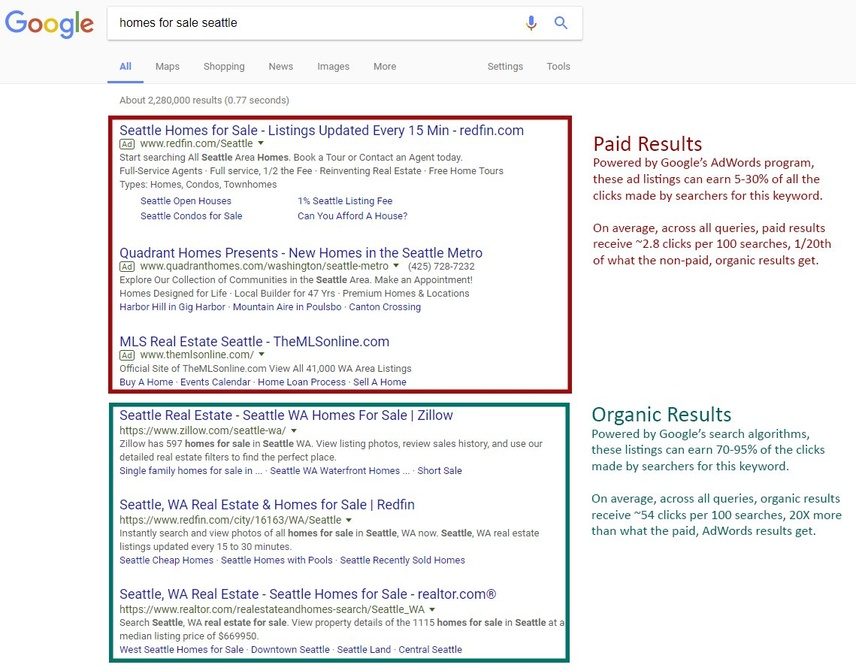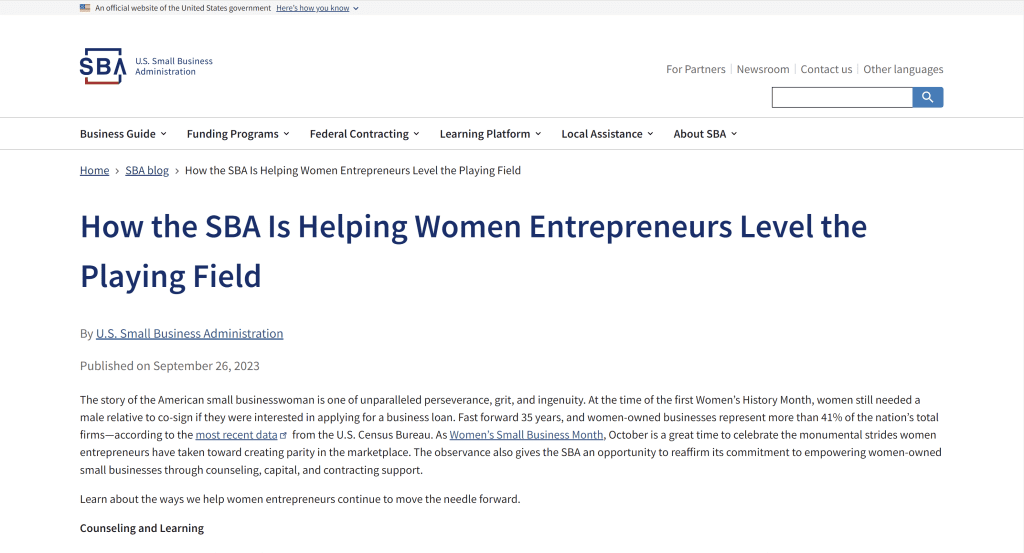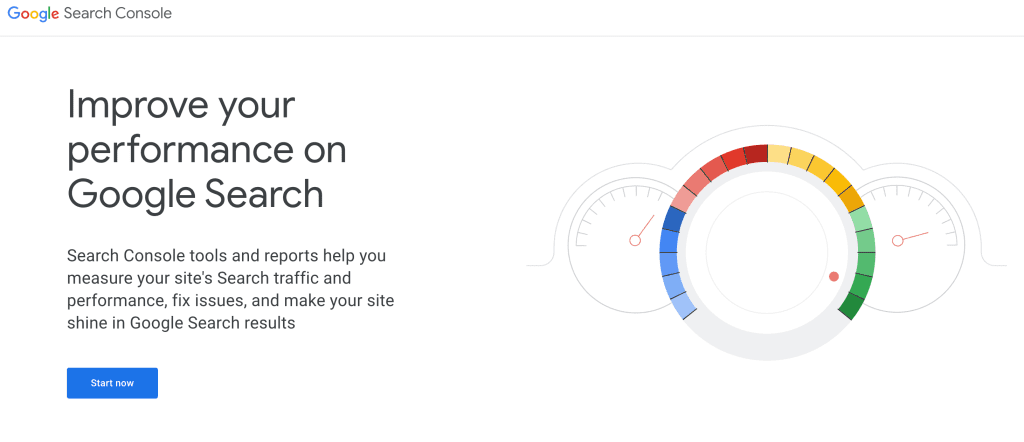Key Takeaways
- Strategic Content Reigns: Craft high-quality, relevant content to align with user intent. From keyword optimization to engaging formats, content is the cornerstone of effective organic traffic growth.
- Holistic SEO Approach: Embrace a holistic strategy. Blend link-building, mobile optimization, and social media integration for a synergistic SEO approach. Avoid common pitfalls for sustainable success.
- Data-Driven Excellence: Harness the power of analytics. Regularly monitor key metrics, learn from user behavior, and adapt strategies accordingly. The journey to boosting organic traffic is a dynamic, data-driven evolution.
In the ever-evolving realm of digital marketing, understanding the essence of organic traffic is paramount.
Whether you’re a seasoned SEO professional or a novice entrepreneur, comprehending the nuances of organic traffic is key to unlocking the vast potential of the digital realm.

Unraveling Organic Traffic: The Virtual Lifeblood
Organic traffic often hailed as the lifeblood of online success, represents visitors who arrive through unpaid, natural search engine results.
It’s the virtual footfall driven by the relevance and credibility of your content, navigating the complex algorithms that search engines employ to determine rankings.
The Significance of Organic Traffic: Beyond Numbers and Clicks
Why does organic traffic hold unparalleled significance? It’s the outcome of strategic SEO practices, compelling content creation, and an unwavering commitment to providing value.
Unlike paid traffic, organic traffic is a testament to the trust and authority your website accrues over time.
The Symbiosis of Content and Algorithms: A Digital Dance
Mastering the art of optimizing your online presence for organic traffic enhances visibility and positions your brand as an authoritative voice.
We’ll explore the dynamic relationship between quality content and search engine algorithms, unveiling the secrets to capturing the attention of both users and search engines.
A Comprehensive Guide: Decoding Organic Traffic
In this comprehensive guide, we’ll delve into the multifaceted dimensions of organic traffic.
From defining its unique characteristics to deciphering the factors that influence its growth, we’ll equip you with the knowledge and tools to propel your website to the upper echelons of search engine results.
The Roadmap to Success: Proven Strategies and Techniques
This isn’t just another SEO tutorial; it’s a roadmap to success crafted through years of industry insights, data-driven strategies, and real-world experiences.
We will navigate through the dos and don’ts of organic traffic optimization, exploring the common pitfalls and proven techniques that can catapult your website to digital stardom.
Common Pitfalls and Proven Techniques: Navigating the SEO Terrain
Explore the common pitfalls that can hinder your progress and the proven techniques that can catapult your website to digital stardom. Learn how to avoid the pitfalls and leverage strategies that have stood the test of time in the ever-evolving world of SEO.
Unleashing Potential: A Journey into the Heart of Digital Prominence
Fasten your seatbelts as we embark on a journey into the heart of digital prominence.
Whether you’re a digital marketing aficionado seeking to refine your craft or a business owner aiming to conquer the online frontier, this guide is your compass to navigate the dynamic landscape of organic traffic.
But, before we venture further, we like to share who we are and what we do.
About AppLabx
From developing a solid marketing plan to creating compelling content, optimizing for search engines, leveraging social media, and utilizing paid advertising, AppLabx offers a comprehensive suite of digital marketing services designed to drive growth and profitability for your business.
AppLabx is well known for helping companies and startups use digital marketing to drive web traffic to their websites and web apps.
At AppLabx, we understand that no two businesses are alike. That’s why we take a personalized approach to every project, working closely with our clients to understand their unique needs and goals, and developing customized strategies to help them achieve success.
If you need a digital consultation, then send in an inquiry here.
What Is Organic Traffic and How to Boost It Effectively?
- Understanding Organic Traffic
- Factors Influencing Organic Traffic
- Strategies to Boost Organic Traffic
- Monitoring and Analyzing Organic Traffic
- Common Mistakes to Avoid
1. Understanding Organic Traffic
In the intricate world of digital marketing, comprehending the nuances of organic traffic is akin to unlocking the secret sauce for online success.
This section will delve deep into the fundamental aspects of organic traffic, unraveling its definition, characteristics, and the pivotal role it plays in the broader spectrum of website visibility and success.

Definition and Characteristics of Organic Traffic
Organic traffic is the lifeblood of online visibility, representing visitors who discover a website through unpaid, natural search engine results.
Unlike paid traffic, which involves financial investment, organic traffic is a result of a website’s relevance, credibility, and alignment with search engine algorithms.
Example: Consider a scenario where a user enters a search query like “best fitness tips.”
The websites that appear in the search results without any “Ad” label are gaining organic traffic.
Users click on these results because they are perceived as highly relevant and trustworthy by search engines.

Differentiating Organic Traffic from Paid and Referral Traffic
Understanding organic traffic necessitates distinguishing it from other traffic sources.
While paid traffic involves advertisements and direct payments for clicks, organic traffic is earned naturally.
Additionally, referral traffic comes from external links, but organic traffic is directly linked to search engine queries.
Example: If a user clicks on an advertisement labeled as “Ad” in the search results for “best fitness tips,” that is considered paid traffic.
Conversely, if the user clicks on a non-ad result that appears due to its relevance and SEO efforts, it contributes to organic traffic.

Why Organic Traffic Matters for SEO
Organic traffic is the heartbeat of successful SEO strategies.
Search engines, led by algorithms like Google’s PageRank, prioritize websites with organic traffic, considering them authoritative and valuable to users.
Harnessing organic traffic is not just about numbers; it’s about building trust and credibility with both users and search engines.
According to a study, organic search drives 53.3% of website traffic, making it a crucial aspect of online visibility.
2. Factors Influencing Organic Traffic
Understanding the factors that influence organic traffic is fundamental to crafting a successful SEO strategy.
In this section, we will delve into the intricate elements shaping organic visibility, exploring the dynamics of search engine algorithms, on-page SEO optimization, and the technical underpinnings that drive a website’s performance in the digital landscape.

Search Engine Algorithms: Gatekeepers of Organic Visibility
Search engine algorithms act as the gatekeepers to organic visibility, determining which websites rank higher in search results.
A nuanced understanding of these algorithms is crucial for tailoring strategies that align with their evolving criteria.

- Content Relevance:
- Search algorithms prioritize content that directly addresses user intent. Crafting content that comprehensively covers a topic, incorporates relevant keywords, and aligns with user queries enhances organic visibility.
- Example: A blog post on “Healthy Meal Prep Ideas” that covers a variety of nutritious recipes and addresses common questions around meal planning aligns with user intent and is more likely to rank higher.
- Backlinks:
- Quality backlinks from reputable websites signal to search engines that a site is credible and authoritative. Websites with a robust backlink profile are often rewarded with higher organic rankings.
- Example: A fitness website earning backlinks from authoritative health organizations or well-known fitness influencers establishes itself as a reliable source, boosting its organic visibility.

On-Page SEO Optimization: Crafting Relevance and Readability
On-page SEO optimization involves fine-tuning individual pages to make them more search engine-friendly.
This includes strategic placement of keywords, optimizing meta tags, and ensuring content readability.

- Keyword Research and Implementation:
- Thorough keyword research helps identify terms and phrases relevant to the target audience. Implementing these keywords strategically in titles, headers, and throughout the content enhances a page’s relevance.
- Example: A website selling eco-friendly products strategically incorporates keywords like “sustainable living” and “environmentally friendly products” to align with user searches.
- Title Tags, Meta Descriptions, and Header Tags:
- Crafting compelling title tags and meta descriptions not only improves click-through rates but also signals to search engines what the content is about. Proper use of header tags enhances content structure and readability.
- Example: A blog post titled “The Ultimate Guide to Organic Gardening” with a meta description summarizing key points signals to users and search engines that the content covers comprehensive insights into organic gardening.
- Content Quality and Readability:
- Well-crafted, engaging content not only satisfies user intent but also contributes to a positive user experience. Search engines prioritize content that is not only relevant but also easily digestible.
- Example: An online education platform delivering in-depth, well-structured lessons on programming languages not only attracts organic traffic but also earns user trust and positive signals for search engines.
Technical SEO Elements: The Backbone of Organic Performance
Technical SEO involves optimizing the technical aspects of a website to enhance its performance in search engine results.
From website speed to mobile responsiveness, these factors influence user experience and, consequently, organic rankings.
- Website Speed and Performance:
- Fast-loading websites provide a positive user experience, and search engines reward such sites with higher rankings. Slow-loading pages can lead to higher bounce rates and lower organic visibility.
- According to Google, the probability of bounce increases by 32% as page load time goes from 1 second to 3 seconds.
- Example: An e-commerce site optimizing its product pages for quick loading ensures that users have a seamless experience, reducing bounce rates and improving organic rankings.

- Mobile Responsiveness:
- With a significant portion of internet users accessing content via mobile devices, mobile responsiveness is critical. Search engines prioritize mobile-friendly websites, considering the growing mobile user base.
- In the first quarter of 2023, mobile devices (excluding tablets) generated 58.33 per cent of global website traffic.
- Example: A news website with a responsive design ensures that users accessing articles from mobile devices have a user-friendly experience, contributing to sustained organic visibility.
- Secure and Accessible Website Structure:
- A secure website with an accessible structure enhances user trust and contributes to improved organic rankings. Search engines favour websites with HTTPS protocols and well-organized site structures.
- Example: An online banking platform implementing HTTPS to secure user transactions not only ensures data protection but also signals to search engines that the site is trustworthy, positively impacting organic visibility.

Understanding how these factors interplay is essential for developing a holistic approach to organic traffic growth.
Successful SEO strategies leverage these elements in tandem to build a robust online presence that resonates with both users and search engines.
3. Strategies to Boost Organic Traffic
Crafting a successful organic traffic strategy involves a combination of well-thought-out techniques, each tailored to enhance a website’s relevance and authority in the eyes of both users and search engines.
In this comprehensive section, we’ll explore strategies encompassing content creation and optimization, link-building techniques, social media integration, and user experience enhancement.

Content Creation and Optimization: The Core of Organic Appeal
Creating and optimizing content lies at the heart of any successful organic traffic strategy.
By focusing on quality, relevance, and user experience, businesses can organically attract and retain their target audience.
- Creating High-Quality, Relevant Content:
- Content that answers user queries, provides valuable insights, and is presented in an engaging manner is more likely to attract organic traffic. Consistent creation of high-quality content positions a website as an authoritative source.
- Example: A travel blog consistently producing in-depth guides, travel itineraries, and destination reviews not only captures the attention of travel enthusiasts but also ranks higher in search results for related queries.

- Utilizing Long-Tail Keywords:
- Long-tail keywords, specific and detailed phrases, contribute to targeted organic traffic. By incorporating these keywords naturally into content, websites can capture niche audiences actively searching for specialized information.
- Example: An e-commerce site specializing in handmade leather goods strategically uses long-tail keywords like “handcrafted leather wallets” to attract users looking for unique, artisanal products.
- Regularly Updating and Refreshing Content:
- Search engines favour fresh, updated content. Regularly updating existing content and refreshing older posts can signal to search engines that a website is actively providing relevant information.
- According to HubSpot, companies that published 16+ blog posts per month got almost 3.5X more inbound traffic than companies that published between 0-4 monthly posts.
- Example: An industry news website consistently updates articles with the latest information, ensuring users find up-to-date content and search engines recognize the site’s commitment to relevance.

Link Building Techniques: Building the Web of Authority
Link building remains a critical aspect of organic visibility, contributing to a website’s authority and trustworthiness in the eyes of search engines.
- Building Quality Backlinks:
- Earning backlinks from reputable, authoritative websites is a testament to a site’s credibility. Quality backlinks act as digital votes of confidence, positively impacting organic rankings.
- Example: A technology blog gaining backlinks from renowned tech publications and industry influencers establishes itself as a reliable source, leading to improved organic visibility.
- Internal Linking Strategies:
- Internal links connecting pages within a website, contribute to a cohesive site structure. Strategic internal linking can distribute authority throughout the site, enhancing the visibility of key pages.
- Example: An e-learning platform strategically interlinks related courses, guiding users to explore additional content and signalling to search engines the interconnectedness of valuable information.
- Avoiding Black Hat SEO Practices:
- Unethical practices, such as buying or exchanging links, can lead to penalties from search engines. Genuine, earned backlinks are essential for sustained organic growth.
- 55.24% of pages don’t have a single backlink.
- Example: A business blog focuses on creating valuable content that naturally attracts backlinks, steering clear of manipulative practices that could harm its organic standing.

Social Media Integration: Amplifying Organic Reach
Leveraging the power of social media platforms is a dynamic strategy to amplify organic reach, foster engagement, and drive traffic to a website.
- Leveraging Social Media Platforms for Visibility:
- Regularly sharing content on platforms like Facebook, X (formerly Twitter), Instagram, and LinkedIn can extend a website’s reach. Social signals also contribute to search engine algorithms, impacting organic rankings.
- With roughly three billion monthly active users as of the second quarter of 2023, Facebook is the most used online social network worldwide.
- Example: A lifestyle blog shares its articles on social media platforms, engaging with its audience and encouraging social sharing, thus increasing the potential for organic visibility.
- Encouraging Social Sharing of Content:
- Implementing social sharing buttons on a website makes it easier for users to distribute content across social platforms. User-generated shares can contribute to increased organic visibility.
- Example: An e-commerce site includes social sharing buttons on product pages, enabling satisfied customers to share their purchases with their social networks, potentially driving organic traffic.

User Experience and Engagement: The Interactive Path to Visibility
Enhancing user experience and engagement directly impacts how users interact with a website, contributing to increased visibility in search engine results.
- Improving Website Navigation:
- An intuitive and well-organized website structure ensures that users can easily navigate and find relevant information. Positive user experiences reduce bounce rates, signalling value to search engines.
- Example: An online marketplace categorizes products logically, making it effortless for users to find what they’re looking for, ultimately improving organic visibility.
- Enhancing User Experience with Multimedia:
- Incorporating multimedia elements such as images, videos, and infographics enhances user engagement. Websites offering a diverse range of content formats are more likely to capture and retain organic traffic.
- 91% of businesses use video as a marketing tool.
- Example: A travel website includes visually appealing travel guides with high-quality images and informative videos, creating an immersive experience for users and increasing the likelihood of organic shares.
- Encouraging Visitor Interaction:
- Features such as comments, forums, or interactive elements encourage user participation. Active user engagement not only enhances the overall user experience but also signals relevance to search engines.
- Example: A fitness blog incorporates a community forum where users can share workout tips and success stories, fostering a sense of community and encouraging sustained organic engagement.

4. Monitoring and Analyzing Organic Traffic
Effectively boosting organic traffic is a continuous process that involves not only implementing strategies but also closely monitoring and analyzing the performance of these efforts.
In this section, we will explore the essential aspects of setting up Google Analytics, key metrics to track, and making informed decisions based on analytical insights.

Setting Up Google Analytics: The Analytical Foundation
Setting up Google Analytics is a fundamental step in gaining insights into website performance.
This powerful tool provides a wealth of data that can guide decisions and optimizations.
- Configuring Google Analytics:
- Start by creating a Google Analytics account and integrating the tracking code into your website. This code allows Google Analytics to collect data on user interactions, providing valuable metrics for analysis.
- Example: A business blog integrates Google Analytics to track user behaviour, enabling the monitoring of pageviews, user demographics, and other crucial metrics.
Key Metrics to Track: Navigating the Analytical Landscape
Understanding the key metrics associated with organic traffic is essential for gauging the effectiveness of implemented strategies and identifying areas for improvement.
- Organic Traffic Growth:
- Monitor the overall growth of organic traffic to assess the impact of SEO efforts. Analyze trends over specific periods to identify patterns and correlate them with implemented strategies.
- Keyword Performance:
- Analyze the performance of targeted keywords. Identify high-performing keywords that contribute to organic traffic and explore opportunities to optimize content around relevant terms.
- Example: A technology blog might note increased visibility for key terms like “latest tech trends” and “innovations” after conducting thorough keyword research and optimizing content accordingly.
- Conversion Rates:
- Evaluate the conversion rates of organic traffic by tracking specific goals or actions (e.g., form submissions, product purchases). Understanding how organic visitors engage with the site provides insights into the effectiveness of content and user experience.
- Example: An online course platform might observe a spike in organic traffic conversions after implementing a targeted content strategy that emphasizes the platform’s unique features and benefits.
Making Informed Decisions: Data-Driven Optimization
Interpreting analytics data is crucial for making informed decisions that optimize organic traffic strategies. Regularly reviewing and acting upon insights ensures ongoing improvement.
- Identifying High-Performing Content:
- Identify content that consistently attracts organic traffic. Analyze the characteristics of high-performing pages and replicate successful elements in new content creation.
- Example: A lifestyle blog identifies that listicles and how-to guides consistently attract organic traffic. The editorial team decides to produce more content in these formats to capitalize on the trend.

- Addressing High Bounce Rates:
- High bounce rates can indicate a disconnect between user expectations and the content provided. Analyze pages with high bounce rates and optimize them for better user engagement.
- Example: An informational website notices a high bounce rate on a particular landing page. After redesigning the page for improved clarity and adding interactive elements, the bounce rate decreases.
- Optimizing for User Demographics:
- Utilize demographic data to understand the characteristics of the audience engaging with organic content. Tailor future content to align with the preferences and interests of the target demographic.
- Example: A travel blog discovers that a significant portion of its organic audience consists of adventure enthusiasts. The editorial calendar might be adjusted to feature more adventure travel content.
5. Common Mistakes to Avoid
Understanding the potential pitfalls in organic traffic optimization is as crucial as knowing the strategies that lead to success.
In this comprehensive section, we’ll explore common mistakes businesses often make and how to steer clear of these pitfalls.

Keyword Stuffing and Over-Optimization: The SEO Quicksand
One prevalent mistake that can harm organic visibility is excessive reliance on keywords, leading to keyword stuffing and over-optimization.
- Understanding Keyword Stuffing:
- Keyword stuffing involves excessively using keywords in content to manipulate search engine rankings. This practice can result in penalties from search engines.
- Example: A blog post about fitness supplements repeats the phrase “best fitness supplements” unnaturally throughout the content in an attempt to boost rankings.
- How to Avoid It:
- Focus on creating high-quality, user-centric content. Use keywords naturally and prioritize readability. Ensure that the content addresses user intent rather than prioritizing keyword density.
- Google Panda targets websites with low-quality content, such as duplicate, thin, or irrelevant material.
Neglecting Mobile Users: The Mobile-First Imperative
As mobile device usage continues to rise, neglecting mobile optimization is a critical mistake that can hinder organic visibility.
- The Significance of Mobile Responsiveness:
- Mobile responsiveness refers to a website’s ability to adapt and provide a seamless experience on various devices, especially smartphones and tablets.
- Example: An e-commerce site that fails to optimize its product pages for mobile users may experience a high bounce rate among potential customers accessing the site from mobile devices.
- How to Avoid It:
- Prioritize mobile responsiveness in web design. Test your website on different devices to ensure a consistent and user-friendly experience. Google’s mobile-first indexing means that mobile-friendly sites are given preference in search rankings.
Ignoring Technical SEO Issues: The Silent Detractors
Technical SEO issues, often overlooked, can silently impact organic visibility and hinder the overall performance of a website.
- Common Technical SEO Issues:
- Technical issues include slow loading times, broken links, server errors, and poor website structure. These issues can negatively affect user experience and, consequently, organic rankings.
- Example: A business website with broken internal links may confuse users and disrupt the site’s overall navigational structure, leading to a decline in organic rankings.
- How to Avoid It:
- Regularly conduct technical SEO audits to identify and resolve issues. Use tools like Google Search Console to monitor crawl errors, and ensure website elements, such as images and scripts, are optimized for speed.
- Faster-loading websites are favored in search results, resulting in higher visibility and organic traffic.

Neglecting Content Quality: The Foundation of Organic Success
In the pursuit of SEO, the quality of content is a fundamental factor often overlooked.
Focusing solely on keywords without delivering valuable content can lead to missed opportunities.
- Importance of Quality Content:
- Search engines aim to provide users with the most relevant and valuable content. Neglecting content quality can result in diminished user satisfaction and lower organic rankings.
- Example: A blog that prioritizes quantity over quality by publishing numerous short and poorly researched articles may struggle to attract and retain an audience.
- How to Avoid It:
- Invest time and resources in creating comprehensive, well-researched, and engaging content. Prioritize user experience by addressing the needs and queries of your target audience.
- Long-form content tends to rank well.
Overlooking Local SEO: The Missed Local Opportunities
Local SEO is often underestimated, especially by businesses targeting a local audience.
Ignoring local optimization can lead to a loss of potential customers in the immediate vicinity.
- Significance of Local SEO:
- Local SEO focuses on optimizing a website for local search queries, making it more visible to users in a specific geographic area.
- Example: A neighborhood bakery that overlooks local SEO optimization may miss out on potential customers searching for “bakery near me” in the local area.
- How to Avoid It:
- Optimize your Google My Business listing, include location-based keywords in your content, and encourage customer reviews from the local community. This helps your business appear in local search results.
- 76% of people who conduct a local search on their smartphone visit a physical place within 24 hours.
Neglecting Social Signals: The Social Connection to SEO
The impact of social signals on SEO is often underestimated.
Social media engagement can contribute to a website’s authority and organic visibility.
- The Role of Social Signals:
- Social signals include likes, shares, and comments on social media platforms. Search engines consider these signals as indications of content relevance and user engagement.
- Example: A brand that neglects social media engagement may miss the opportunity to amplify its content reach and build a community around its products or services.
- How to Avoid It:
- Actively engage on social media platforms, share your content, and encourage audience participation. Social signals can indirectly influence organic rankings.
- 4.95 billion people use social media worldwide.
Lack of Regular Updates and Maintenance: The Stagnation Syndrome
Once optimized, some websites fall into the trap of complacency, neglecting regular updates and maintenance.
- The Importance of Regular Updates:
- Search engines value fresh and updated content. Neglecting regular updates may result in a decline in rankings as algorithms favour current and relevant information.
- Example: A business blog that fails to update its content in response to industry developments may lose credibility and organic visibility over time.
- How to Avoid It:
- Establish a content update schedule, refresh outdated information, and stay informed about industry trends. Regularly check for broken links and technical issues to ensure optimal website performance.
Conclusion
In the vast and dynamic realm of digital marketing, understanding the intricacies of organic traffic is not just a strategy; it’s a journey.
Through the exploration of what organic traffic is and the myriad strategies to boost it effectively, we’ve uncovered the critical elements that contribute to online visibility, user engagement, and sustainable growth.
As we conclude this comprehensive guide, let’s distil the key insights and actionable takeaways that will empower businesses and individuals to navigate the organic traffic landscape with precision.
The Essence of Organic Traffic: Beyond Numbers and Metrics
At the core of our exploration lies the essence of organic traffic – the digital footfall driven by genuine user interest and relevance.
It transcends mere numbers and metrics; it represents the synergy between user intent, quality content, and search engine algorithms. Understanding organic traffic is about recognizing the symbiotic relationship that exists in the ever-evolving digital ecosystem.
Strategies for Organic Eminence: A Holistic Approach to Visibility
Our journey into effective strategies for boosting organic traffic revealed a multifaceted approach that goes beyond keyword optimization.
Crafting high-quality, relevant content; building authoritative backlinks; embracing mobile responsiveness; and fostering user engagement through social media integration all contribute to a holistic strategy.
By avoiding common pitfalls and steering clear of detrimental practices, businesses can foster an online presence that not only attracts but sustains organic traffic growth.
The Analytical Compass: Nurturing Growth through Monitoring and Analysis
The role of monitoring and analyzing organic traffic cannot be overstated.
Through the lens of tools like Google Analytics, businesses gain invaluable insights into user behaviour, keyword performance, and the impact of implemented strategies.
This analytical compass guides informed decision-making, allowing for continuous optimization and adaptation to the ever-shifting dynamics of the digital landscape.
Evading Common Mistakes: Building a Robust Foundation for Success
Our exploration into common mistakes underscored the importance of a vigilant and proactive approach to organic traffic optimization.
From steering clear of keyword stuffing and over-optimization to embracing the significance of local SEO, each pitfall avoided becomes a stepping stone towards a robust foundation for success.
By learning from the missteps of others, businesses can navigate the SEO minefield with confidence.
Embracing the Ongoing Journey: A Call to Continuous Improvement
As we conclude this guide, it’s essential to recognize that the journey to organic eminence is an ongoing process of refinement and adaptation.
The digital landscape evolves, search engine algorithms undergo transformations, and user behaviours shift. In this dynamic environment, embracing the ethos of continuous improvement is not just a recommendation; it’s a necessity.
Your Path Forward: Empowered for Organic Excellence
Armed with a wealth of knowledge on organic traffic, effective strategies, analytical insights, and the awareness to avoid common pitfalls, businesses and individuals are now empowered for organic excellence.
The path forward involves a commitment to quality, a dedication to user experience, and a willingness to embrace the ever-changing nature of digital marketing.
If you are looking for a top-class digital marketer, then book a free consultation slot here.
If you find this article useful, why not share it with your friends and business partners, and also leave a nice comment below?
We, at the AppLabx Research Team, strive to bring the latest and most meaningful data, guides, and statistics to your doorstep.
To get access to top-quality guides, click over to the AppLabx Blog.
People also ask
How can we increase organic traffic?
Increase organic traffic by optimizing content with relevant keywords, creating high-quality, shareable content, building authoritative backlinks, ensuring mobile responsiveness, engaging on social media, and regularly monitoring and adapting strategies based on analytics insights.
What is organic traffic?
Organic traffic refers to visitors who find your website through unpaid search results. Driven by search engine relevance, it reflects the natural, non-paid flow of users intrigued by your content, products, or services, making it a crucial metric in online visibility and success.
What is the best source of traffic for organic traffic?
Search engines, especially Google, are the primary source of organic traffic. By optimizing your website for search engine algorithms, utilizing relevant keywords, and creating valuable content, you can attract users actively seeking information, products, or services related to your online presence.






























